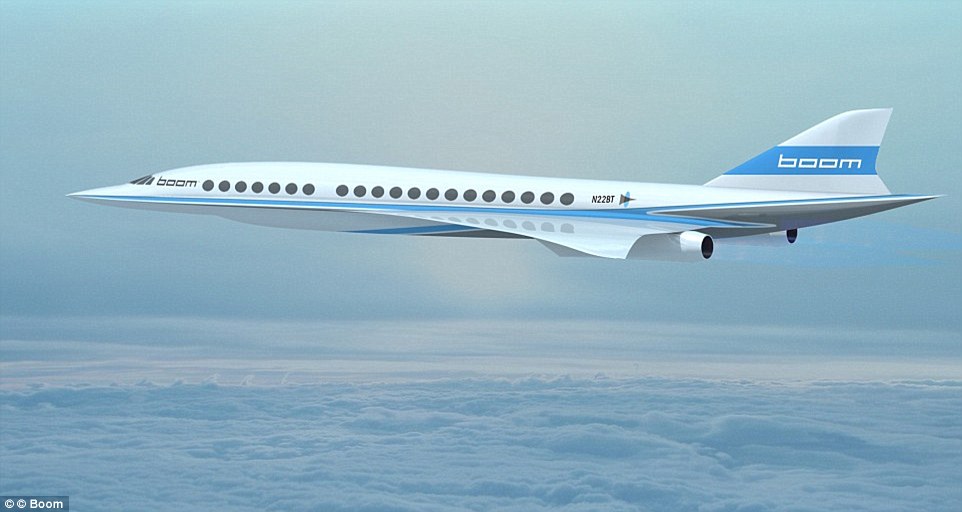Virgin Group founder Sir Richard Branson has vowed to resurrect commercial supersonic flight in 2023, the 20th year since the grounding of Concode, after backing a new technology venture that promises to slash the cost of fares.
Boom Technology, the brainchild of former Amazon executive Blake Scholl, reckons it will be able to have the first commercial flights of its 45-55-seat supersonic transport (SST) in operation just seven years after the project was launched in March this year.
Underlining the urgency of the venture, Boom yesterday "rolled out" a one-third scale model of the new plane, dubbed the XR1 or "Baby Boom", at its hangar in Denver, Colorado – a mere eight months after the project was first announced in March, 2016.
XR1 is scheduled to begin flight testing in a year from now to prove the design before the construction of a full-scale prototype.
Scholl says the venture is keeping costs down by using existing engine technology and new lightweight composites developed for the Boeing 787 Dreamliner and the Airbus A350 over the past decade.
It will also operate within existing regulations, which ban supersonic flight over land.
He says operators will be able to charge the equivalent of current business class fares – about $US5000 return, or a quarter of what Concorde was charging before its demise – with the potential for "enormous" margins at Mach 2.2 or 10 per cent faster than Concorde, taking just three and a half hours for the 5500-kilometre trip between London and New York.
Branson is connected to the project through his space flight company, Virgin Galactic, and its manufacturing arm, the Spaceship Company, which is providing engineering and construction services, as well as participating in the flight test program.
The Boom Technology team includes engineers from Boeing and NASA, among others.
The Virgin Group has taken options on the first 10 airframes to be built.
“I have long been passionate about aerospace innovation and the development of high-speed commercial flights,” Branson says.
While Branson says the initial focus of commercial services will be over the north Atlantic between Europe and America, the new SST will also be able to halve the travel time between America and Japan or America and Australia.
Even with the necessary fuel stop en route, the travel time between Los Angeles and Sydney, for example, would be under eight hours, instead of the current subsonic 13-14 hours.
“Sixty years after the dawn of the jet age, we’re still flying at 1960s speeds,” says Scholl, who is backed by a number of Silicon Valley venture capitalists.“Concorde’s designers didn’t have the technology for affordable supersonic travel, but now we do."
“Ultimately I want people to be able to get anywhere in the world in five hours for $100. This is supersonic passenger air travel, no bullshit, and it’s actually affordable.”
























